I.e., if I set it 24 inches away from a rodent burrow, about 12-14 inches off the ground, and sprinkle a handful of seeds at sundown, how does it perform?
Is it sensitive enough to reasonably capture the ensuing "clean up" without running frantically all night, triggering at every small twitch? Or, is it not sensitive enough and missing the activity?
How are the exposure and flash? Is it blowing out the scene because of the short distance?
What about sharpness, focal depth and color/white balance?
Below are the recent results of just such a test. The new cam trap combines a Sony Cyber-shot DSC-W220 point-and-shoot digital camera with a SnapShot Sniper controller card.
The Sony W220 is 12 mega pixels, has a nice, wide 28mm lens, auto-focuses down to 1.2 inches, and has an adjustable flash and programmable settings, such as exposure value (EV), ISO, and white balance. All highly valuable features for small mammal photography.
The SnapShot Sniper is a versatile cam trap controller card that also has a good range of programmable settings, including a sensitivity adjustment for the embedded motion sensor.
And the combo seems to be working well. During the Mouse Test it captured 96 photos in a bit over 5 hours (~ 9pm to 2am), with no obvious false triggers.
So now let's look at the pics.
3 different deer mice worked the scene - one brown, one rufous, and one gray with more white on its sides. Tail, ear, body and foot proportions suggest all are Peromyscus maniculatus.
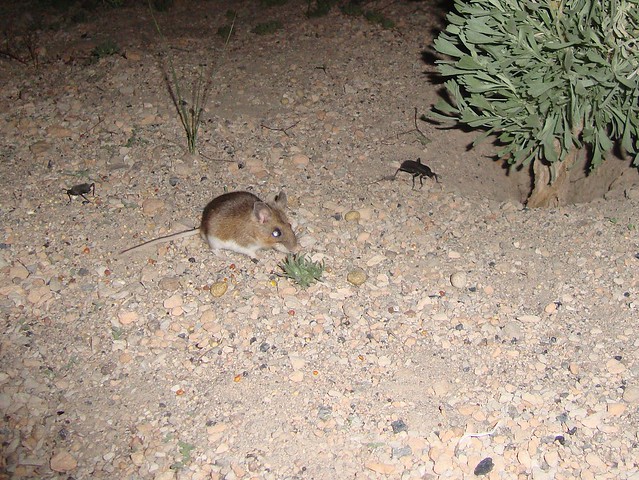
Deer mouse #1 to the scene, including ground beetle entourage
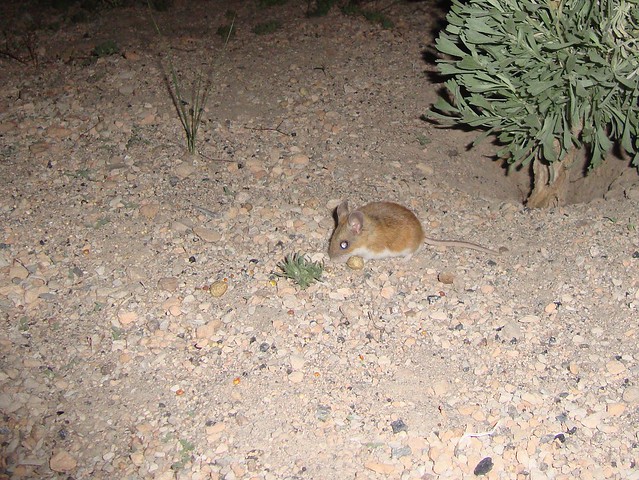
Deer mouse #2 - more rufous
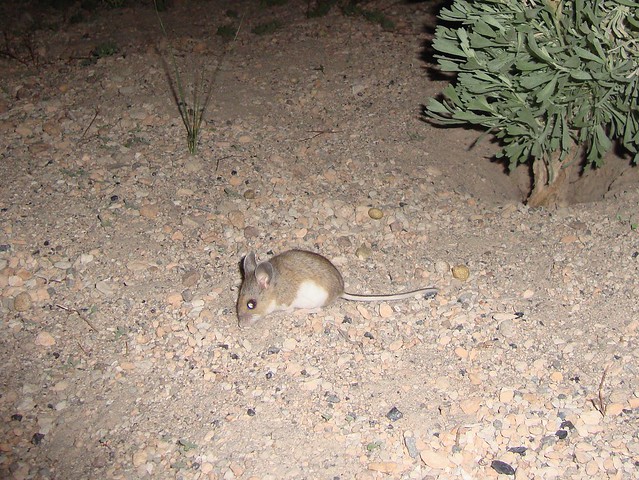
Deer mouse #3 - grayer with much more belly white up the sides
Another "mouse" also joined the foraging fun - a Great Basin Pocketmouse, Perognathus parvus. It's a Great Basin species that barely ranges into California.
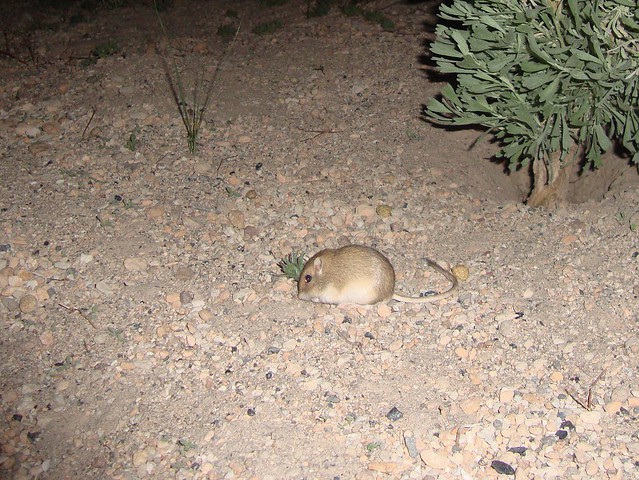
Great Basin Pocketmouse, a mouse-size relative of the kangaroo rats
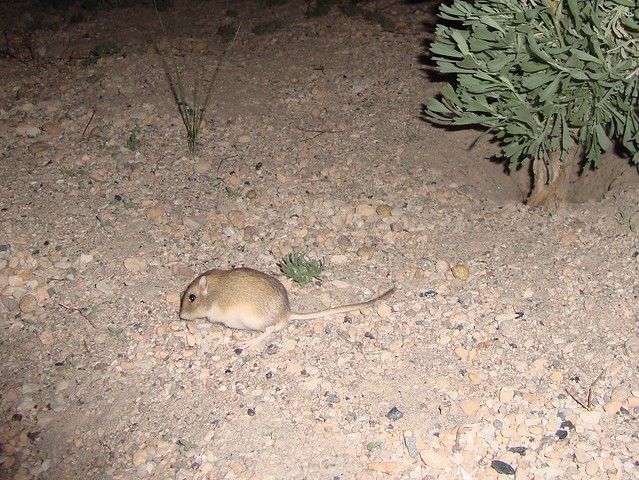

A kangaroo rat, the much larger relative of the pocketmouse, also worked the seed scene. In this case I think it's Ord's Kangaroo Rat, Dipodomys ordii. It seems to be the standard species on the sandy sage steppe flats in the Mono area.
Note - for size comparisons, the above 6 and following 2 photos are all the same crop.
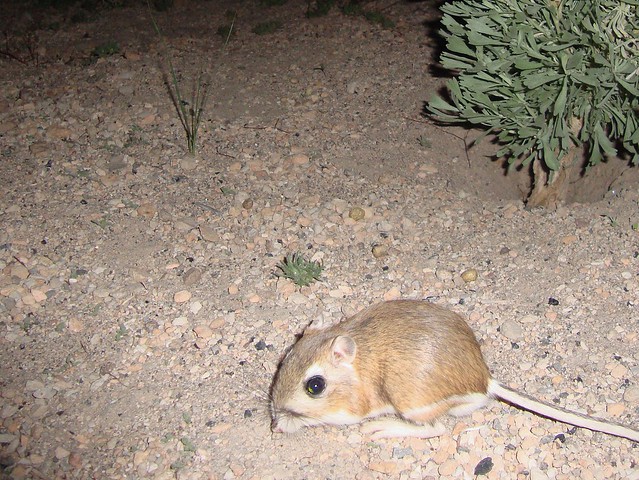
A kangaroo rat, likely Ord's k-rat - as sweet as any gerbil or hamster
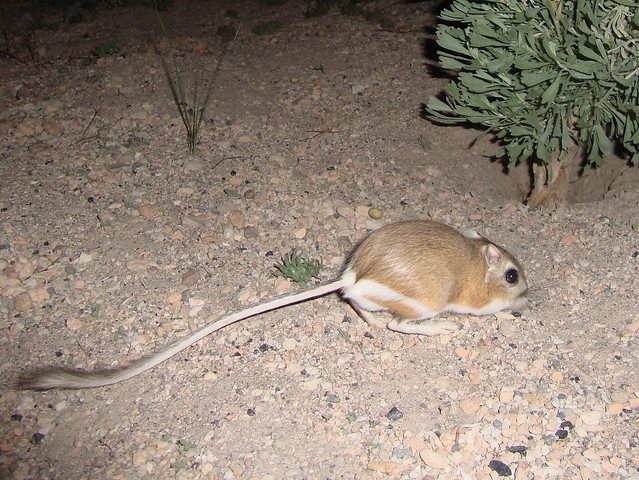
Now that's a tail built for balance!
And finally, here are 3 detail crops of the above.
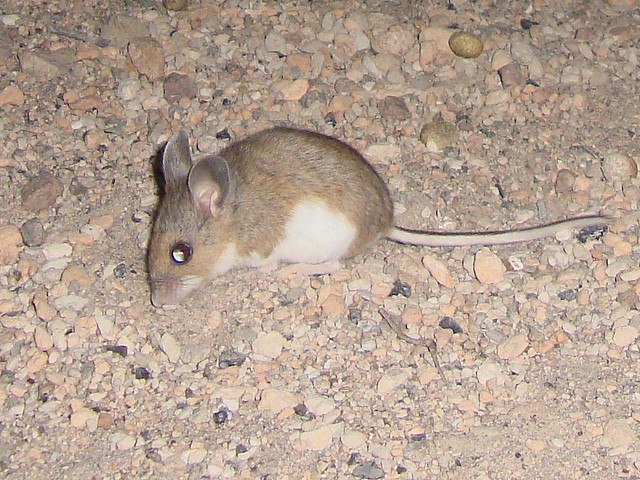
Detail crop of deer mouse
Detail crop of pocketmouse
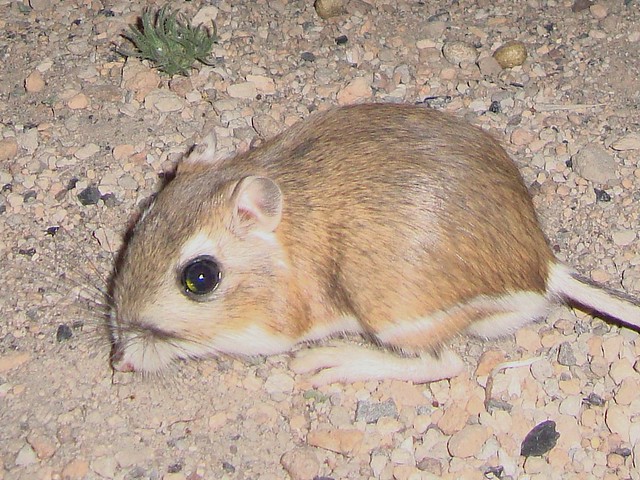
Detail crop of much larger kangaroo rat
Not bad at all. A bit overexposed when within 12 inches, but I should be able to handle that by dropping the exposure value by -1/3 or -2/3. Fixing the ISO to 80 or 100 might help, too.
I'd say it passes the Mouse Test. What do you all think?
====
Not bad at all. A bit overexposed when within 12 inches, but I should be able to handle that by dropping the exposure value by -1/3 or -2/3. Fixing the ISO to 80 or 100 might help, too.
I'd say it passes the Mouse Test. What do you all think?
References:
- Nature of a Man (this blog) - Deer vs. Kangaroo
- Nature of a Man (this blog) - Becoming Size Wise
- E. W. Jameson, Jr., and Hans J. Peeters, UCPress - Mammals of California
- Snapshot Sniper - controller cards and DIY supplies for making camera traps
- Sony Cyber-shot DSC-W220 Digital Camera


An interesting and informative post. In high school my biology teacher told me that kangaroo rats seldom bite and make good pets. I caught a Merriam's Kangaroo Rat and tried to make a pet out of.
ReplyDeleteI do not remember whether it tried to bite me but it gave me such terrible allergies I had to release it. It is the only animal that has ever given me allergies.
Thanks John. Yes, k-rats are gentle as can be. I've held Merriam's in my hand during small mammal surveys with live traps. They just sit and check you out with their big brown eyes. Aside from allergies, probably the only reason they aren't common as pets is that they're deeply nocturnal, with most activity around 2am. Kinda boring for us diurnal types. :)
DeleteInteresting to read about what goes into cam trapping. "what do I think?" The kangaroo rat is a cutie, what a tail! And nice Artemisia (I presume).
ReplyDeleteThanks Hollis. Wouldn't be the Great Basin sage steppe without lots of A. tridentata. And this wet May-June in that area has made them very happy.
DeleteEnjoyed quite a few of your posts this morn, thank you much.
ReplyDeleteReally good captures . .
ReplyDeleteThat W220 takes nice photos -- plus a really good post.
ReplyDelete